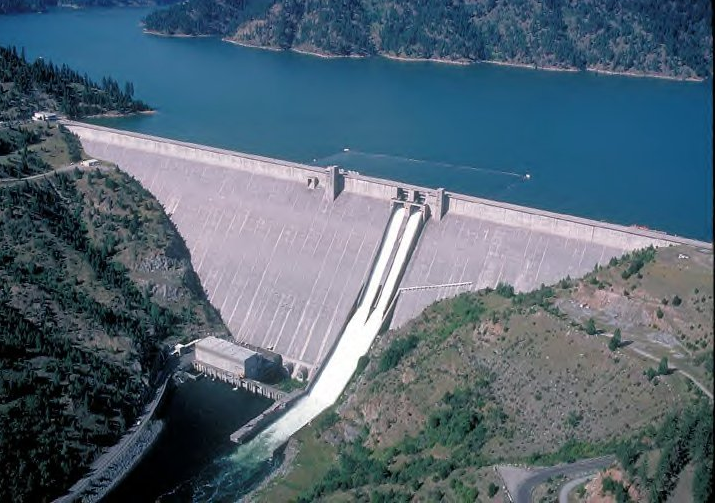This is the twenty-eighth in a series of entries celebrating infrastructure achievements in the United States.
What: The Dworshak Dam, located in Idaho, is the tallest straight-axis concrete dam in the Western Hemisphere.
When: Initial construction began in 1966 & the Dworshak Dam first reached full capacity on July 3, 1973.
Stats:
– Length: 3,287 feet
– Height: 717 feet
– Capacity: 3,468,000 acre-ft
Why: One of the primary goals of the Dworshak Dam is to prevent flooding. One of the worst floods occurred in 1948 and affected communities as far upriver as from British Columbia. See below for some of the damage of the Columbia River Flood:
Interesting facts: The dam posed a threat to many indigenous wildlife populations, most extensively to fish (as dams are wont to do), as well as winter elk and white-tailed deer. To offset these potential losses the the U.S. Army Corps of Engineers constructed the Dworshak National Fish Hatchery. They have also purchased and developed over 7,000 acres of adjacent land for for displaced elk and deer.
In 1980 the dam developed a leak causing 7700 gallons per minute of water to flow into the river. The cost to fix the leak exceeded $1 million. The U.S. Army Corps of Engineers drilled seventy holes into the dam to intercept the crack, relieving pressure on the dam. A plastic sheet was then lowered over the crack. This reduced the flow by half. Additional repairs including a patch made of sawdust, cement and volcanic ash further reduced the flow to an acceptable level.
Get another look of the Dworshak Dam here:
Tags: Clearwater County, Dworshak Dam, Idaho








 RSS Feed
RSS Feed